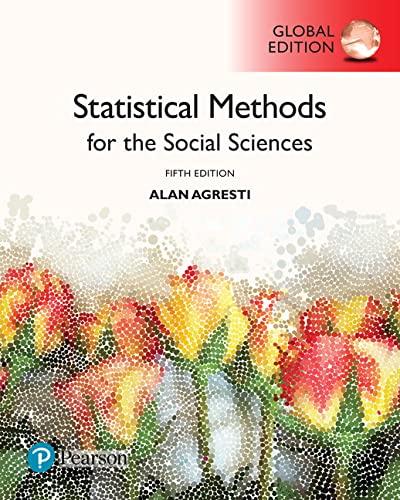15.15. Table 15.25 refers to passengers in autos and light trucks involved in accidents in the state
Question:
15.15. Table 15.25 refers to passengers in autos and light trucks involved in accidents in the state of Maine. The table, available as the Accidents data file at the text website, classifies subjects by sex, location of accident, seat belt use, and a response variable having categories (1)
not injured, (2) injured but not transported by emergency medical services, (3) injured and transported by emergency medical services but not hospitalized, (4) injured and hospitalized but did not die, (5) injured and died.
(a) Fit a cumulative logit model having main effects for sex (s = 1 for males and 0 for females), location (r = 1 for rural and 0 for urban), and seat belt use (s = 1 for yes and 0 for no). State the prediction equation. Interpret the sign of the effect for each explanatory variable.
(b) Report and interpret an odds ratio describing the effect of wearing a seat belt.
(c) Construct a 95% confidence interval for the true odds ratio for the effect of wearing a seat belt. Interpret.
(d) Conduct a test of the hypothesis of no effect of seat belt use on the response, controlling for sex and location.
Report the P-value and interpret.
(e) Fit the model that also has the three two-way interactions.
Use a likelihood-ratio test to compare this model to the main effects model. Interpret.
Step by Step Answer:

Statistical Methods For The Social Sciences
ISBN: 9781292220314
5th Global Edition
Authors: Alan Agresti






